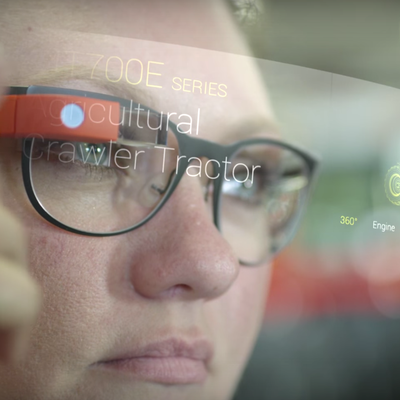
It’s been over five years since the introduction and subsequent demise of Google Glass. The original model was too pricey, too creepy, and not useful enough to justify either the hefty price tag or the social stigma of looking like the world’s most gung ho laser-tag player. By January of 2015, Google quietly announced no new products would be developed for Glass.
But the underlying idea of mixed reality continued to tick along. Apple’s new ARKit is already turning out some impressive demos. Facebook made it the centerpiece of its F8 conference this year. Microsoft’s HoloLens is truly impressive in person, even if the tech — for now — remains expensive.
And now the company is talking about its new effort, Glass Enterprise Edition. Google has quietly been at work on it for a while — it filed papers for a new version of its device in December of last year, and updated the Glass firmware one month ago. But a long profile in Wired shows that Google has completely shifted focus. Glass Enterprise Edition won’t be a consumer-tech item, meant for checking email, taking shower selfies, or creeping people out in a bar. Instead, it’ll be a workplace tool, meant for sectors where being hands-free but able to get information easily is highly valuable.
[1:49]
Wired looks at AGCO, a manufacturer of large-scale agricultural equipment that has quietly been using Google Glass Enterprise Edition in its factories and during field calls. Much of its work is custom-made for individual buyers, which means unique specs for each piece of equipment manufactured by AGCO. While that previously meant consulting a laptop kept open somewhere nearby, Glass allows AGCO workers to call up specs while still underneath the hood.
Google has also upgraded the hardware on Glass. The actual tech is now more of a clip-on you can add to safety or prescription glasses, has a beefier processor, better networking capabilities, longer battery life, and a higher-quality camera (that also has a red light that turns on when recording — even in the workplace, you don’t wanna be creepy).
In a lot of ways, the factory floor is where Glass should have always been; Google attempted to make it into a luxury consumer product when its applications were much more suited to the workplace. Tellingly, AGCO was already experimenting with Glass long before the Enterprise Edition came out. And Google is mainly coordinating efforts between would-be enterprise clients and those who can build out the specialized software each business will need — a tractor-factory worker will want and need different software than a medical worker — while selling the Glass for $1,300 to $1,500 a pop. (This is the same price, roughly, that the first version of Google Glass cost consumers back in 2012, but the difference between what a business is willing to pay to help its workers be more productive or safer versus what a consumer will pay for a new gadget is vast.)
It seems that AR (or mixed reality, depending on your preference) will, for the near future, fork in two directions. Consumers will rapidly start to see AR become more commonplace, but mainly through holding up their cell-phone screen to overlay information (or just some fun gimmick) on top of the world in front of them. Meanwhile, head-mounted solutions like Glass or HoloLens will be used by workers for training and on-the-job heads-up information. When and if the two forms intersect again could be years — or even decades — away.





























